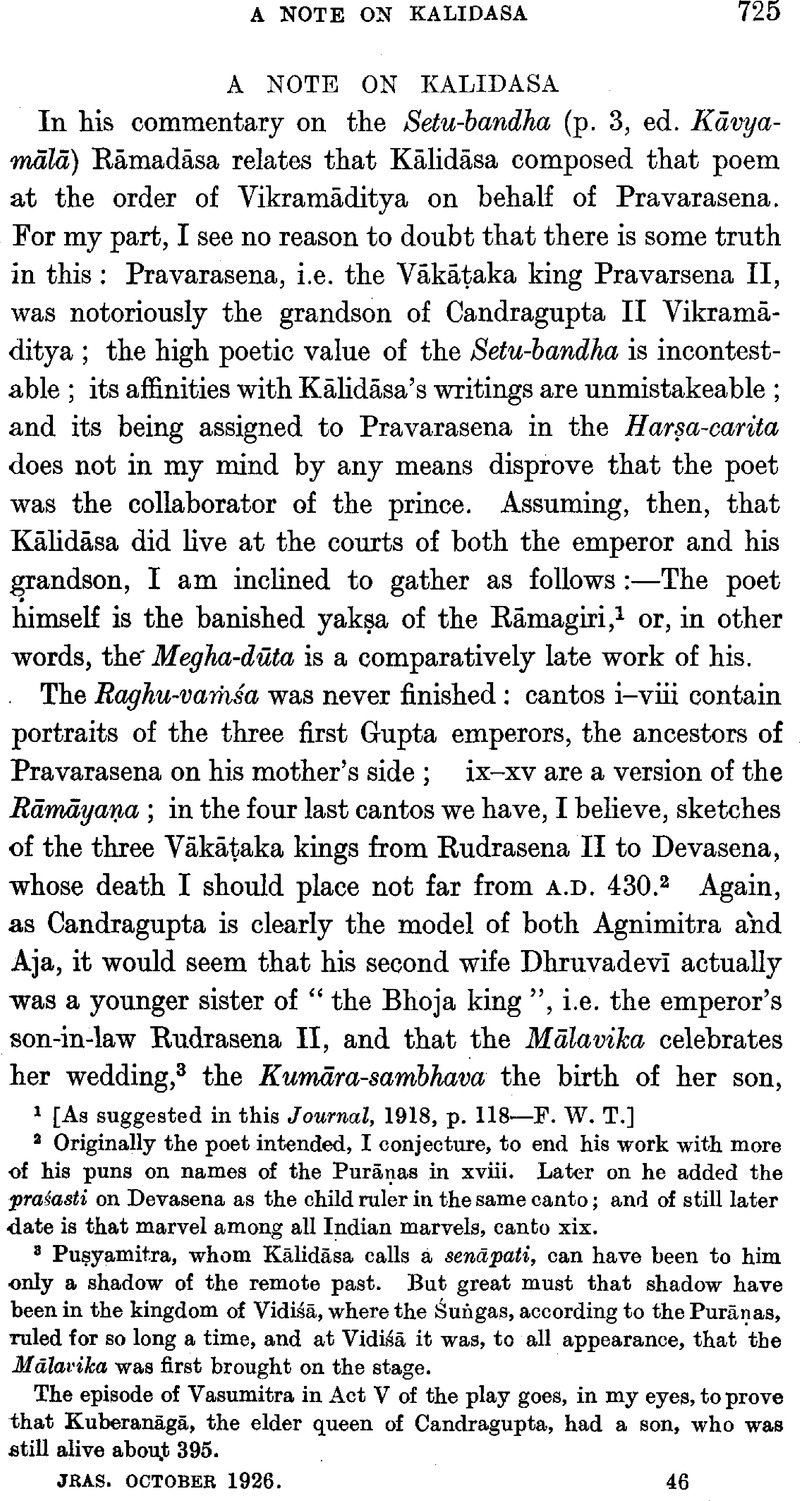No CrossRef data available.
Article contents
Abstract

- Type
- Miscellaneous Communications
- Information
- Copyright
- Copyright © The Royal Asiatic Society 1926
References
page 725 note 1 [As suggested in this Journal, 1918, p. 118—F. W. T.]
page 725 note 2 Originally the poet intended, I conjecture, to end his work with more of his puns on names of the Purāṇas in xviii. Later on he added the praśasti on Devasena as the child ruler in the same canto; and of still later date is that marvel among all Indian marvels, canto xix.
page 725 note 3 Puṣyamitra, whom Kālidāsa calls a senāpati, can have been to him only a shadow of the remote past. But great must that shadow have been in the kingdom of Vidiśā, where the Śuṅgas, according to the Purāṇas, ruled for so long a time, and at Vidiśā it was, to all appearance, that the Mālavika was first brought on the stage.
The episode of Vasumitra in Act V of the play goes, in my eyes, to prove that Kuberanāgā, the elder queen of Candragupta, had a son, who was still alive about 395.
page 726 note 1 I take it for granted that nobody in our days is of opinion that Vararuci's Prakrit grammar may be prior to the beginning of our era.


